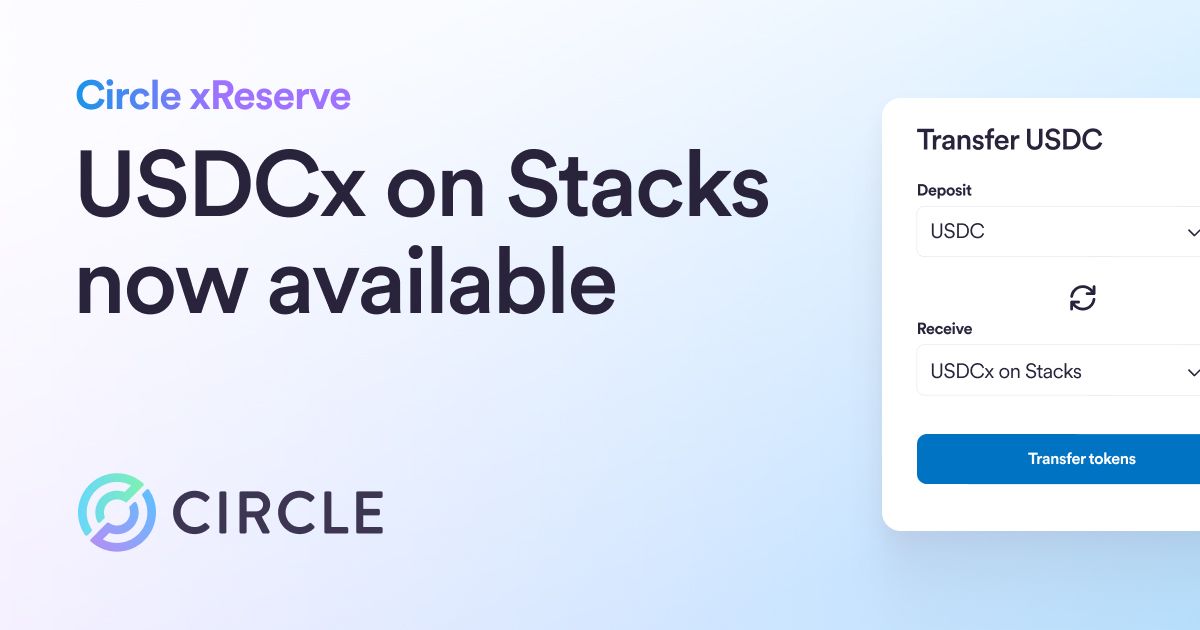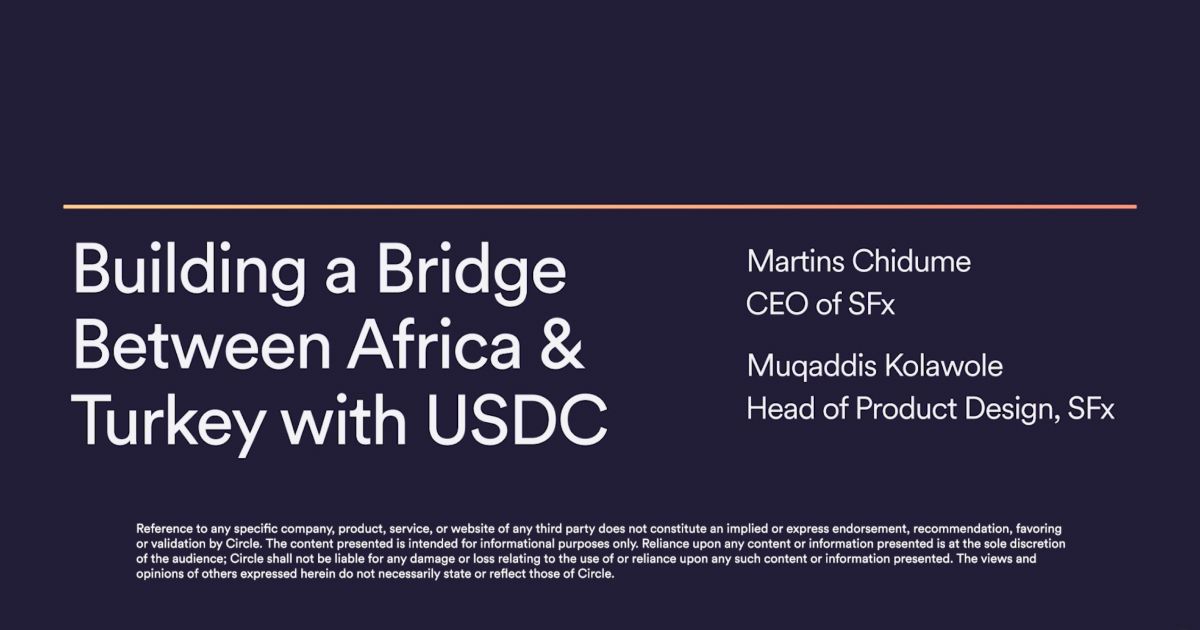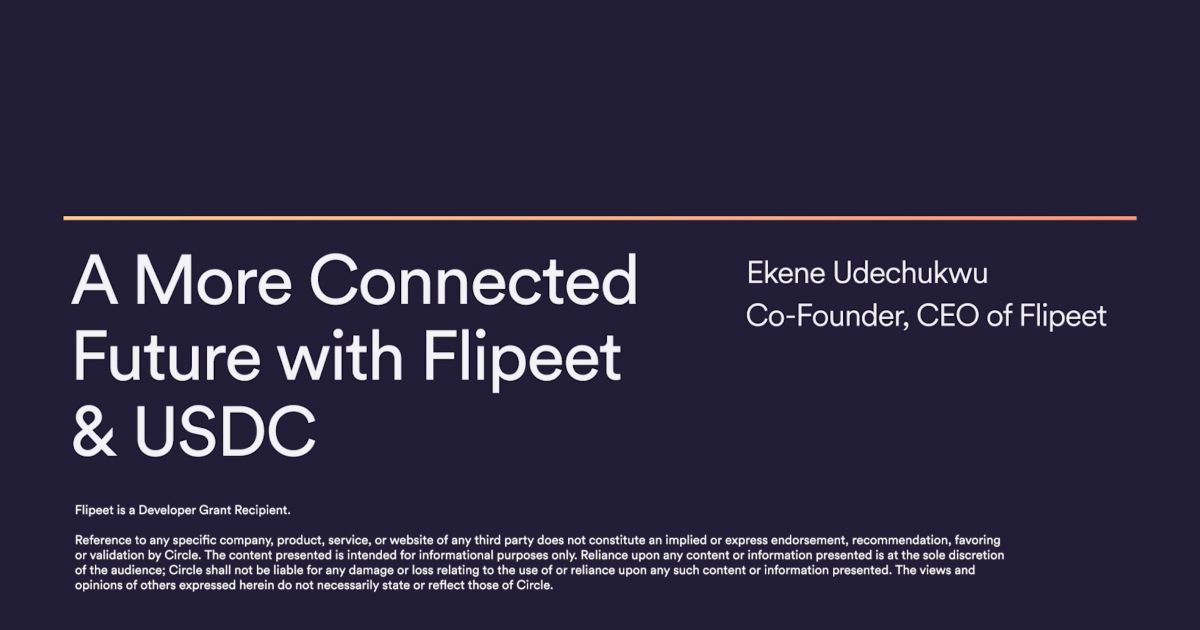USDC: The Dollar’s Next Form Factor is the second part in a series, The Convergence of Money and the Internet, from Circle.

The stablecoin era begins
In the first part of this series, we explored the impact that blockchains and digital currencies could have on the economy and society. It’s now possible to send value across the internet in the same way as email, video files and JPEGs — ubiquitously, globally, almost instantly and cheaply — to eliminate the significant economic friction that exists in today’s fragmented, antiquated payments systems.
And in the future, real-world assets like cars and property could be broadly owned, financed and traded on-chain, creating deeper liquidity and reducing the time, effort and costs historically associated with such transactions.
Here in part 2, we take a look at the recent rise of stablecoins with a close focus on USD Coin (USDC), issued by Circle. The U.S. dollar has taken many forms since the Coinage Act of 1792, but has evolved very little beyond the electronic “ACH dollars” that financial institutions send back-and-forth privately across computer infrastructure designed decades ago.
USDC is a digital asset that has price parity to the U.S. dollar. It supercharges traditional dollars with the cost and speed advantages of the internet without the volatility of other digital currencies.
The importance of being stable
Most digital currencies are created to reward the people who confirm blockchain transactions. Bitcoin miners receive Bitcoin (BTC), Ethereum validators receive Ether (ETH) and so on. But the prices of these digital assets can be extremely volatile, making them unsuitable so far for mass commercial adoption.
Blockchains that are smart-contract enabled allow developers to introduce other digital assets into their ecosystems (read more on smart contracts in Part 3 of this series). This is where stablecoins like USDC enter the picture. “Programmable” stablecoins that live on multiple blockchains at the same time can help eliminate this price volatility and lay the foundation for truly rewiring global commerce.
Not all stablecoins are created equal, and it’s important to distinguish between the different types. USDC is a fully reserved stablecoin that’s 100% backed by cash and short-dated U.S. Treasuries, so that it's always redeemable 1:1 for U.S. dollars. More recently, we also began issuing Euro Coin (EUROC), a euro-backed stablecoin that’s managed using the same full-reserve model as USDC.
Other stablecoins are reserved with riskier assets or rely on complicated, algorithmic relationships with other digital currencies to try to retain their peg. USDC avoids these complications with its easy-to-understand, straightforward structure.
The USDC reserve is held roughly 80% in short-dated U.S. Treasuries and roughly 20% in cash deposits within the U.S. banking system. The reserve is fully transparent and subject to third party assurance that there are sufficient assets to meet liabilities. It does not contain any other assets of different risk profiles.
Short-dated U.S. Treasuries carry the full faith and credit of the United States, and are the most liquid assets in the world. The Treasuries in the USDC reserve are held in an SEC-regulated, wholly-owned, government money fund structure. They are not subject to any lock-ups or redemption gates. There is daily independent, third-party reporting on this portfolio, down to each individual security.
We hold roughly 20% of the reserve in cash to satisfy the immediate liquidity needs of our customers. Circle, like every institution, relies on a safe, well-regulated commercial banking system to house those cash reserves and facilitate customer liquidity. Following multiple recent bank failures, Circle has taken steps to reduce risk from the banking system by now holding substantially all of the cash portion of the reserve at one of the world’s 30 global systemically important banks, also known as a GSIB. GSIBs are widely recognized as the safest banks, with the highest capital, liquidity and supervisory requirements in the world. We also hold modest funds at our transaction banking partners in support of USDC liquidity operations.
Global availability, deep liquidity

*Circle internal data
Crucially, Circle is also regulated in the U.S. under the same money transmitter licenses that govern other widely used payment institutions, including Apple Pay (which is compatible with USDC) and PayPal. The U.S. Congress is making progress on a national stablecoin framework that could codify many of our USDC risk management practices into Federal law.
Circle is also licensed in the U.K. by the Financial Conduct Authority (FCA) and by the Bermuda Monetary Authority (BMA) in Bermuda. In late 2022, we also received in-principle regulatory approval in Singapore from the Monetary Authority of Singapore (MAS).
Circle's world-class ecosystem

USDC also offers another key advantage: interoperability across many blockchains. It’s the leading stablecoin on Ethereum — today’s dominant smart contract platform — as of January 16, 2022, and it also flows seamlessly across many other blockchains that are newer, faster and cheaper. This interoperability makes it easy to transact in a blockchain-agnostic way across a broad swath of the digital asset ecosystem. Circle is building infrastructure to handle cross-chain transfers in the background, so it can happen automatically without users even noticing.
Let’s take a look at USDC’s programmability, which makes it easy for businesses to adopt and build with.
USDC: A “Dollar API” to speed digital transformation
While the digital currency era accelerates, the corporate finance tech stack is simultaneously undergoing significant changes. Fueled by the rise of treasury APIs, open banking and regulations like PSD2 that unbundle payments and account services, today’s finance teams have more freedom than ever to create a bespoke set of financial solutions that are customized to their company’s unique needs.
But digitization strategies focused on AI, machine learning and banking APIs fall short of achieving the largest benefits. Despite data visibility improvements and some rudimentary real-time capabilities, these technologies still apply only to transactions that run on the costly, antiquated, friction-filled legacy financial system.
USDC, on the other hand, can help take the most sought-after benefits of treasury digitization and API connectivity to a whole new level. You can think of USDC itself as an API that enables companies to transact in dollars — directly across the internet — with customers, suppliers and any other counterparty. Although sending and receiving USDC is easy to do “off the shelf,” you can also build with it and create customized, automated workflows for mass payouts and receivables that are free from most of the cost and friction of traditional global payments.
Since USDC uses open-source code on smart contract blockchains, it’s easy to program it for simple “if/then” business conditions, whether the recipient is down the street or across the globe. These programmable, internet-based payments represent a major breakthrough in how businesses can transfer value.
How to get and store USDC
Any business, institution and individual with an internet connection can create a free wallet where they can store and transact with digital currencies. In addition to these free options, many providers — including Circle — offer enterprise-grade solutions with extra layers of security, utility and protection.
Circle’s account infrastructure offers businesses a fast, safe way to do business with digital currency. It enables free, direct access to USDC through a corporate treasury portal-like user experience that makes blockchain complexity fade into the background, just as card terminals eliminate interchange complexity for merchants. Circle account infrastructure offers powerful payments and receipts capabilities, including the ability to settle Bitcoin and Ether transactions as USDC. We also offer industry-leading, enterprise-grade digital asset custody in-house, plus compatibility with third-party custodians and many blockchain-based markets and services (explained more in Part 5 of this series).
Perhaps most importantly, Circle is helping to nurture and strengthen a powerful ecosystem of third-party services built around USDC to help it become, in essence, a new global operating system for money. There are already thousands of available apps that make it easy for businesses to use USDC, and we expect this ecosystem to grow over time.
Understanding the new settlement layer
Blockchains are what makes it possible for USDC to turbocharge regular U.S. dollars with programmability and the same cost and speed benefits as other forms of internet data. While it’s not necessary to have a computer science degree to use USDC, it can help to have a basic understanding of how blockchains operate and where they fit in the history of the broader internet.
In Part 3, we explore how this new digital infrastructure has evolved thus far and what it could mean for global commerce going forward.





